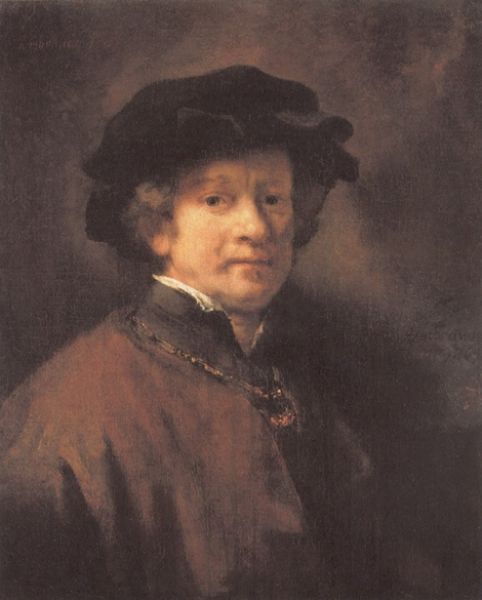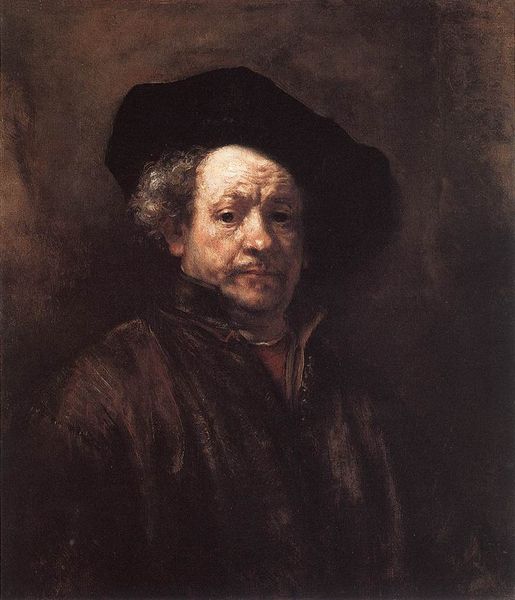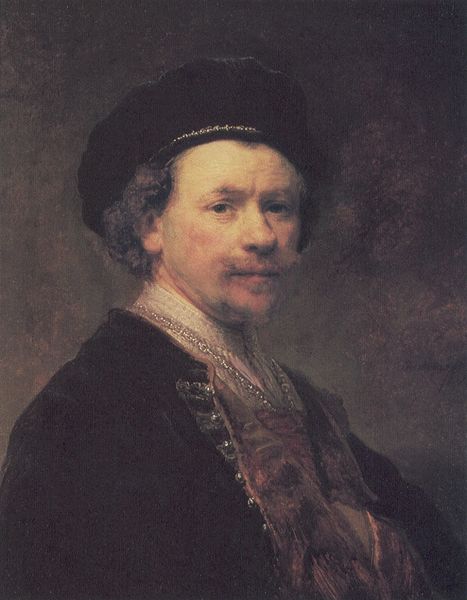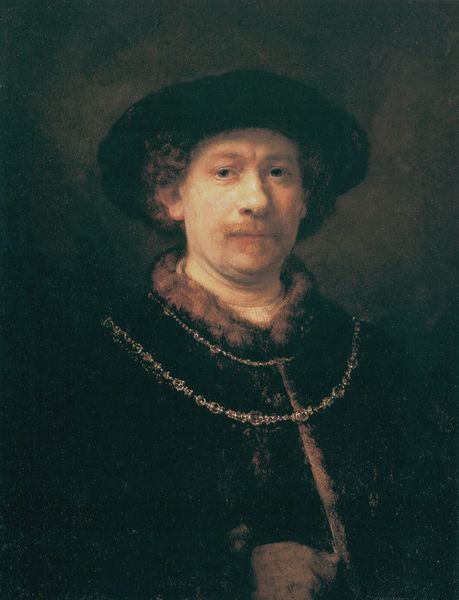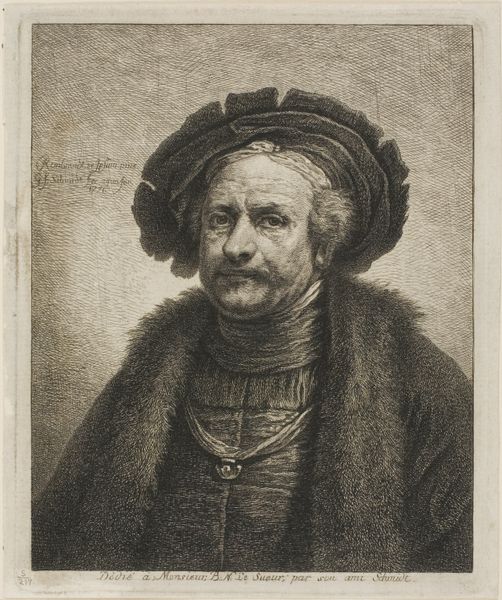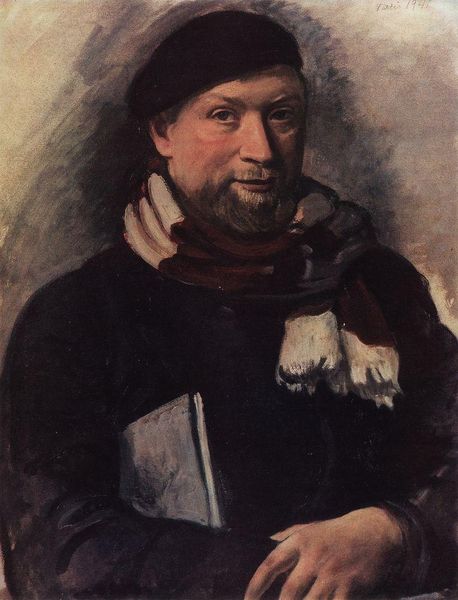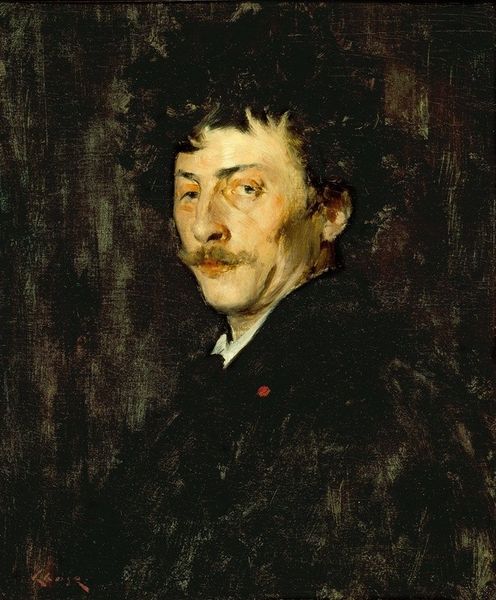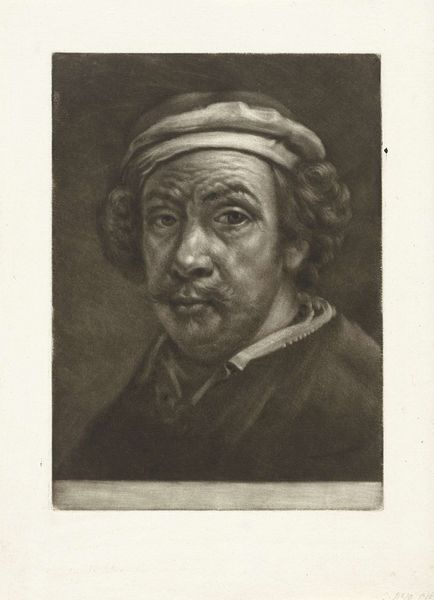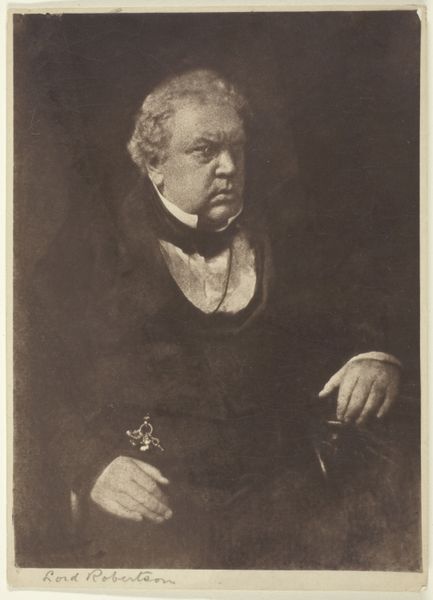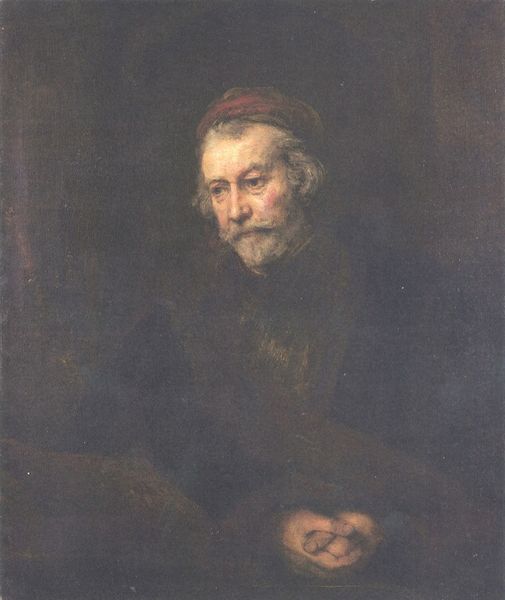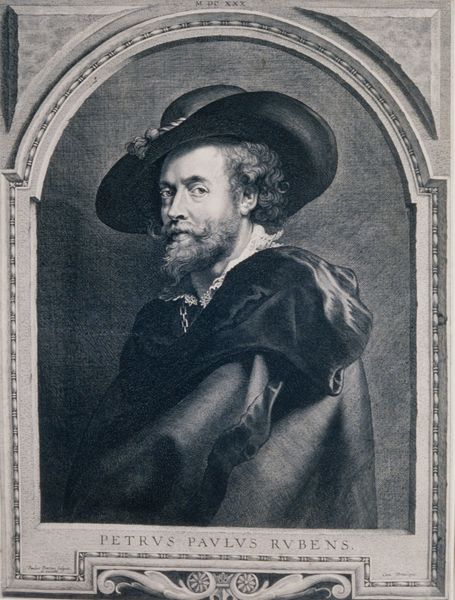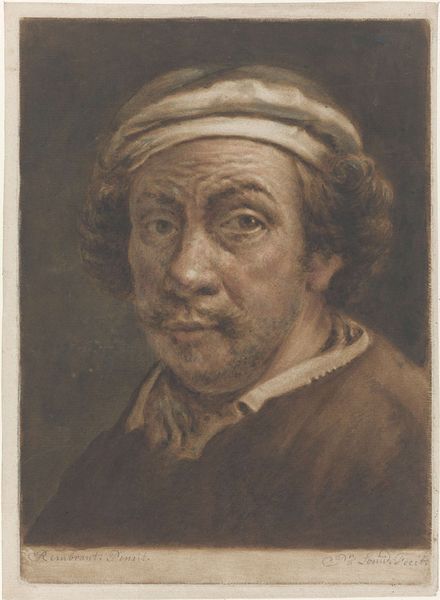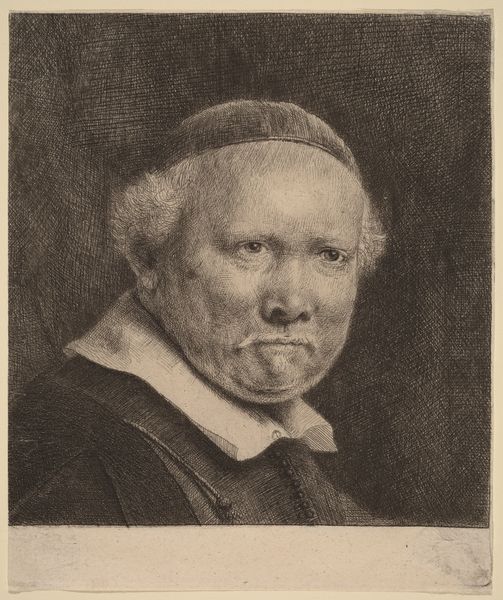
painting, oil-paint
#
portrait
#
self-portrait
#
baroque
#
dutch-golden-age
#
painting
#
oil-paint
#
chiaroscuro
Dimensions: 53 x 43 cm
Copyright: Public domain
Curator: Look at this work! It's a painting entitled "Self-portrait", executed by Rembrandt van Rijn in 1659. He employs oil paint to masterfully explore his image. Editor: My immediate impression is the sheer presence evoked by this work. There’s a weighty materiality in the layers of paint, a sense of tangible aging and wisdom conveyed. It makes me wonder about Rembrandt's studio conditions—the light, the smells, the cost of the pigments he had at hand. Curator: Indeed! Let’s delve into the formal construction. Notice the strong chiaroscuro, that stark contrast of light and shadow defining not just form but mood. How the illumination models his face, highlighting texture, the lines etched by time, whilst plunging the background into near-obscurity, flattening space. The composition seems geared entirely toward emphasizing inner depth. Editor: Precisely, and I'd argue that materiality becomes crucial to understanding this depth. Oil paint isn't just a passive medium here; its thickness, its very viscosity allowed Rembrandt to sculpt light. This painting manifests labor, both mental and manual. Were his supplies limited at the time? How much did such dark hues affect production choices? Curator: Valid questions, although consider too the purely optical effects. Rembrandt seems less concerned with perfect anatomical accuracy than with psychological insight. See the slight asymmetry of his eyes, for instance. It adds vulnerability and makes you consider authenticity over technical perfection, thus emphasizing emotional authenticity. Editor: But consider the economic aspect as well: who afforded such art and its access? I imagine that each brushstroke carries not just personal meaning, but social weight reflecting the structures of patronage of the day. Can we separate Rembrandt's individual experience from societal factors of production influencing supply? Curator: An interesting question, for sure! His manipulation of perspective draws our focus inward toward reflection and personal insight into old age. The structural relationship emphasizes emotional truth rather than mere external representation. Editor: Still, I see each application, choice, or stroke loaded also as cultural choices dictated by accessibility under prevailing conditions affecting Rembrandt's era plus vision as it intersects throughout a world in transition... Ultimately giving the observer insight. Curator: He presents insight; as for each’s conclusion – materialist perspective will continue revealing deeper contexts while purely optical consideration never diminishes one thing: timeless human connection that’s visible through masterful structural arrangement! Editor: Indeed! Let's ponder this relationship while it stays with its observers, then maybe the materials are the reason after all.
Comments
No comments
Be the first to comment and join the conversation on the ultimate creative platform.
